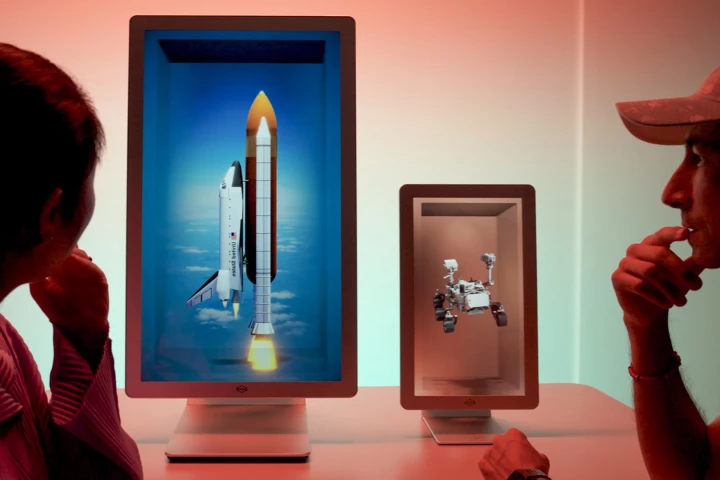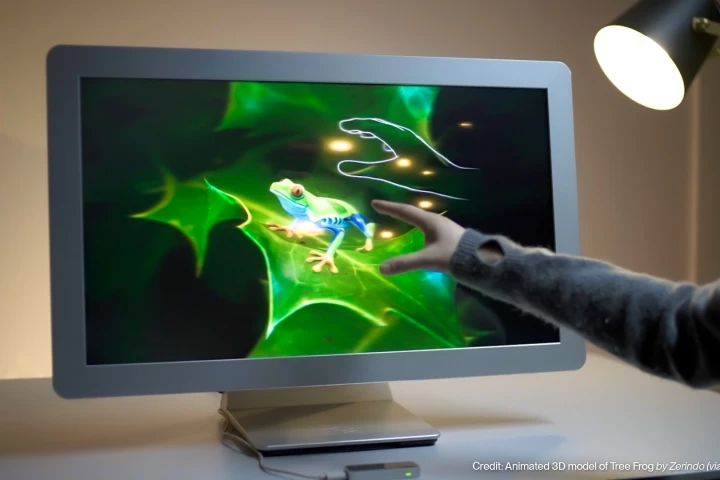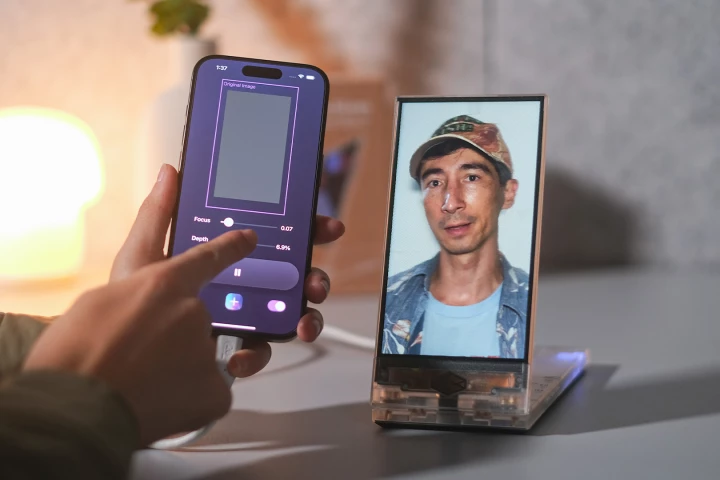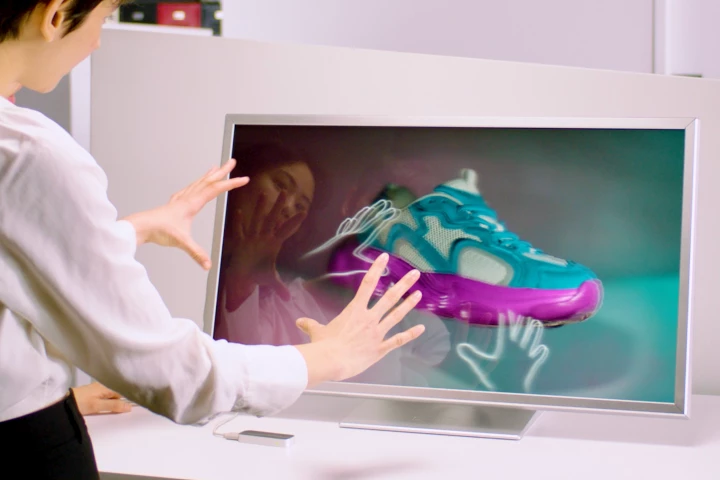3D
-
Looking Glass Factory has been making glasses-free holograms a thing with innovative displays. For its latest trick, it's devised a screen that can present video and animated content with convincing depth that goes far beyond its slim profile.
-
A few years ago, Google showed off its Project Starline tech that would make you look like a 3D hologram on a video call for a more connected experience. It's now called Google Beam, and you can pick up the gear from HP for the princely sum of US$25,000.
-
For the last few years, Google has been developing 3D video technology that would allow distant colleagues to chat as though they were in the same room. Now the tech giant has rebranded Project Starline to Google Beam to prepare for commercial rollout.
-
Looking Glass has launched a 27-inch version of its immersive light-field displays, which allow folks to experience three-dimensional visuals without having to don special headsets. The tech also allows multiple users to share the 3D viewing experience.
-
Remember the scene in Iron Man 2 where Tony Stark rediscovers a new element and is handling virtual 3D holographic elements with his hands, moving them around, pinching, swiping, flicking, and tossing? Pretty cool in 2010. What about 2025?
-
Looking Glass, which makes screens that display 3D holograms you can see without wearing a headset or glasses, just added iOS support to its tech. That means you can now view Cinematic Mode videos straight from your iPhone or iPad on these displays.
-
Imagine a next-gen VR experience that lets you speak realistic scenes, intelligent characters and complex situations into being, then interact with them in real time. It's coming, due to a convergence of tech like this advance in real-time 3D video.
-
Last year, the Looking Glass Factory launched a Kickstarter for a portable "holographic" display that shows three-dimensional imagery without requiring the viewer to don funky glasses. Now the Go is in the wild and we've been sent one to try out.
-
Apple's Machine Learning Research wing has developed a foundational AI model "for zero-shot metric monocular depth estimation." Depth Pro enables high-speed generation of detailed 3D depth maps from a single two-dimensional image.
-
A new kind of 3D display could take the form of an acrylic cube with an image inside, which can be erased and rewritten to easily. The new technique can be used to make 2D, 3D and even animated images.
-
The Looking Glass Factory has launched two new spatial displays for creative professionals "who demand cutting-edge visualization tools for developing, presenting, and interacting with 3D digital images, video and applications in real time."
-
The openVertebrate project is a significant milestone for natural history museums, researchers, educators, students, and the public, creating the first digital library to offer free access to stunning 3D images of over 13,000 vertebrates.
Load More











